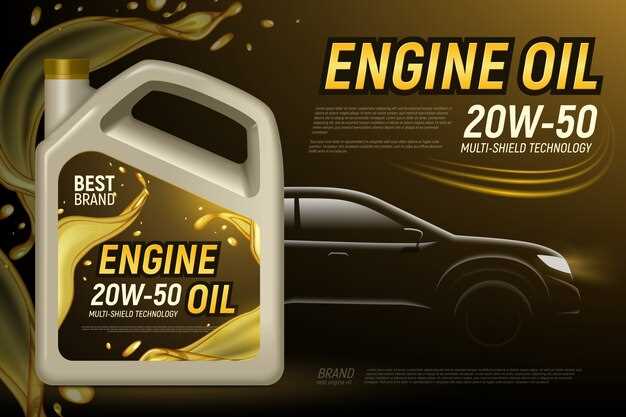
When it comes to maximizing the performance of high-performance motorcycles, selecting the appropriate oil type is a critical decision that can significantly influence both performance and longevity. Unlike standard motorcycles, high-performance models are engineered to operate under extreme conditions, which require specialized lubrication solutions to ensure optimal functionality. Understanding the nuances of oil choices is paramount for any serious rider or racer.
In the high-speed world of racing, the demands on a motorcycle’s engine are immense. The right oil not only provides the necessary protection against wear and corrosion but also helps maintain peak performance at high revs. Factors such as viscosity, oil composition, and additives all play vital roles in how well a motorcycle can perform on race day.
This article delves into the various types of oils available for high-performance motorcycles, exploring their specific attributes and how they align with the rigorous demands of competitive racing. From fully synthetic options to high-mileage formulations, understanding what each type offers is essential for making an informed choice that can help ensure success on the track.
Understanding Viscosity Ratings and Their Impact on Engine Performance

Viscosity ratings are crucial in selecting the right oil for high-performance motorcycles. These ratings indicate how an oil behaves under different temperature conditions, essential for engine efficiency and longevity. Oils are typically rated using the Society of Automotive Engineers (SAE) system, which uses numbers followed by the letter ‘W’ for winter grades (e.g., 10W-40).
The first number reflects the oil’s viscosity at low temperatures, affecting start-up performance. A lower number means thinner oil, which flows more easily in cold conditions, providing adequate lubrication during engine start-up. This attribute is vital for high-performance motorcycles that may experience temperature fluctuations rapidly.
The second number represents the oil’s viscosity at high temperatures, indicating how well it maintains lubricating properties under operating conditions. Higher numbers signify thicker oil that can withstand the heat generated by a high-performance engine without breaking down. This thickness is essential for maintaining a protective film over engine components, reducing wear and tear.
Choosing the correct viscosity rating directly impacts fuel efficiency, engine responsiveness, and overall performance. Using oil with an inappropriate viscosity can lead to inadequate lubrication, increased friction, and potential engine damage. For example, using oil that’s too thick can impede engine performance, while oil that’s too thin may not provide sufficient protection under high-stress conditions.
High-performance motorcycles often require specific viscosity ratings that align with their design and operational demands. Motorcycle manufacturers typically provide recommendations based on the engine’s specifications, and adhering to these guidelines ensures optimal performance and durability.
Comparing Synthetic vs. Conventional Oils for Racing Applications
When it comes to high-performance motorcycles, selecting the right oil is crucial for optimal engine performance, especially in racing applications. Both synthetic and conventional oils have their advantages and disadvantages, and understanding these differences can help riders make an informed decision.
Synthetic oils are engineered from chemical compounds, offering superior properties compared to conventional oils derived from crude oil. One of the primary benefits of synthetic oils is their ability to maintain viscosity across a wider temperature range, which is essential in racing environments where engines can reach extreme temperatures. This stability helps reduce wear and tear on engine components, allowing for better performance and reliability during races.
In contrast, conventional oils tend to break down more easily under high-stress conditions, leading to increased engine wear. While they can be suitable for everyday riding, they may not provide the necessary protection for high-performance motorcycle engines under racing conditions.
Another critical aspect is lubrication. Synthetic oils contain fewer impurities and provide better lubrication properties, reducing friction and enhancing efficiency. This advantage translates to a smoother and more responsive engine, which is vital for competitive racing. Furthermore, synthetic oils often include additives that enhance performance characteristics, such as improved detergents and anti-wear agents, contributing to overall engine longevity.
However, conventional oils may still be sufficient for certain racing applications, particularly for amateur racers or in specific conditions where costs are a significant concern. They are generally more affordable, making them appealing for riders who may not require the extreme performance capabilities of synthetic options.
In summary, while conventional oils can suffice for casual racing, synthetic oils clearly offer superior protection, performance, and efficiency for high-performance motorcycles. For serious racers looking to maximize their engine’s potential, choosing synthetic oil is often the best course of action.
Identifying Oil Additives That Enhance Engine Longevity and Performance

When it comes to high-performance motorcycles, the right oil additives can significantly impact engine longevity and performance. In the racing world, where every fraction of a second counts, choosing oil with the right additives is critical to maximize efficiency and reliability.
One essential category of additives is anti-wear agents, such as zinc dialkyldithiophosphate (ZDDP). These compounds form a protective layer on engine components, reducing friction and wear during intense racing conditions. This protection is crucial for high-revving engines, which experience greater stress and heat, ultimately enhancing engine lifespan.
Another important type of additive is detergents. They are designed to keep engine parts clean by preventing the buildup of sludge and varnish. Contaminants can lead to reduced performance and engine failure. High-performance motorcycles benefit from detergents specifically formulated to withstand the rigors of racing while maintaining optimal engine cleanliness.
Viscosity modifiers play a vital role in ensuring consistent oil thickness at varying temperatures. This is particularly important for racing engines that operate under extreme conditions. A well-formulated oil will maintain its viscosity, providing adequate lubrication and performance during high-speed events, which ultimately contributes to engine durability.
Lastly, friction modifiers can be critical in reducing friction between moving parts. These additives enhance the oil’s ability to cling to surfaces, providing a slippery barrier that decreases wear and heat generation. For racing motorcycles, where every component must operate at peak efficiency, friction modifiers can lead to improved power delivery and responsiveness.
In conclusion, selecting the right oil additives is essential for enhancing engine longevity and performance in high-performance motorcycles. Anti-wear agents, detergents, viscosity modifiers, and friction modifiers all play a significant role in ensuring that engines not only withstand the rigors of racing but also perform optimally under pressure.
